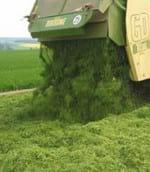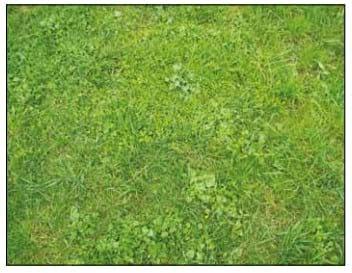Silage Quality
Cultivated Pastures: Expert Advice – On the Way towards Top Quality Silage
Published: May 17, 2011
By: Birgit Rogge, Klaus Slavicek (Addcon)
1. Potential
Did you know how high the energy density of your grass patches is or which kinds of grasses and weeds grow there? Is grass mixture really decisive for the production of high quality grass silage? If need be consult the expert opinion of grass specialists and have them assess the state of your cultivated patches. Also, routinely conduct plant appraisals. Additionally, the examination of the Nmin content can also be useful for estimating the nitrogen supply (for the adequate nitrogen fertilization of the ground). Only those that know what really grows on their site can produce high quality silage.
2. Condition
In what state is your cultivated area in the spring? Through an inspection of your cultivated pastures gappy grass patches as well as slurry and trim residues of the previous year can be spotted and removed. For this task the use of a lowly adjusted hay rake (for the removal of dead grass) at the start of a vegetation cycle is recommended. The requirement for this is of course a navigable and adequately durable ground. When swathing it is important to not exceed a given speed (3-4 km/h) so as to ensure that the pins scrape directly over the ground. In this fashion dead and festered plant material is removed. It is important to remove these plant leftovers (if need be toss them on dung heaps) as otherwise the dreaded reheating can occur during silage. Unremoved (or unsafely removed) slurry residues are one of the reasons for clostridia formation during silage which leads to an increase of the butyric acid content and manifests itself in a decreased fodder intake. Slurry should therefore be only adequately homogenized and consumed preferably in a low loss fashion. Only those that keep their stretches of land clean can produce the highest qualities of silage.

3. Optimization
For the optimization of your cultivated pastures it is advisable to sow energy rich, elemental grasses early in the spring. German Weidel grass is optimally suited for this purpose. In any case, a mixture of medium range and late sorts (content of tetraploid grasses > 40 %) with high sugar content that are especially palatable and highly digestible is effective. German Weidel grass distinguishes itself primarily through its stature, its strong competitiveness in comparison to other grasses as well as its nitrogen compatibility. Further information about offered grass mixtures can be gathered on the websites of different cultivation companies (such as Advanta, the German Sowing Refinement & Sowing Union). When conducting a late sowing it is recommendable to broadly distribute 6 to 8 kg/ha of grass seeds with a box spreader and afterwards press them with a meadow roller.
A good crumb structure in the soil as well as sufficient soil closure will virtually guarantee high rates of confluence. The fertilization should also be adapted to the specific stock present. Magnesium increases the tastiness of the fodder, prevents grass tetany and is furthermore a component of the nitrogen fertilizer KAS.
Attention: Sulphur; sulphur lack has a similar appearance to nitrogen lack (possibly use it with KAS 5-8% S).

4. Harvest Management
Successful management of your cultivated pastures is also required when planning your harvest. Part of this management is the extraction and entry (from different locations) of several representative fresh grass samples at the end of April in order to estimate the optimal first trim date. Have a talk with your agricultural service supplier early in the year and be the first to collect your harvest later on.
5. Expert Advise on Silage Resources
• Profit from the discount presently offered when ordering KOFASIL - silage material. If you order before 31.3.2010 you get an additional 20 % for free!
• As you can impossibly know what kind of weather will exist during your harvest (end of April / start of May) be on the safe side and order not only the low-cost biological silage material (KOFASIL LAC, KOFASIL LIFE) of our company but also an adequate amount of KOFASIL LIQUID.
• Only this way will you be able to silage in all weather conditions (even below 25 % dry matter)
• The right moment to trim is when the grass has the highest energy density. In emergencies a wet silage can be tolerated (under such suboptimal conditions we do not recommend the use of biological silage resources). A wet silage can be - even though most farmers disagree - of prime quality; KOFASIL
LIQUID always guarantees a secure and optimal fermentation process.
Did you know how high the energy density of your grass patches is or which kinds of grasses and weeds grow there? Is grass mixture really decisive for the production of high quality grass silage? If need be consult the expert opinion of grass specialists and have them assess the state of your cultivated patches. Also, routinely conduct plant appraisals. Additionally, the examination of the Nmin content can also be useful for estimating the nitrogen supply (for the adequate nitrogen fertilization of the ground). Only those that know what really grows on their site can produce high quality silage.
2. Condition
In what state is your cultivated area in the spring? Through an inspection of your cultivated pastures gappy grass patches as well as slurry and trim residues of the previous year can be spotted and removed. For this task the use of a lowly adjusted hay rake (for the removal of dead grass) at the start of a vegetation cycle is recommended. The requirement for this is of course a navigable and adequately durable ground. When swathing it is important to not exceed a given speed (3-4 km/h) so as to ensure that the pins scrape directly over the ground. In this fashion dead and festered plant material is removed. It is important to remove these plant leftovers (if need be toss them on dung heaps) as otherwise the dreaded reheating can occur during silage. Unremoved (or unsafely removed) slurry residues are one of the reasons for clostridia formation during silage which leads to an increase of the butyric acid content and manifests itself in a decreased fodder intake. Slurry should therefore be only adequately homogenized and consumed preferably in a low loss fashion. Only those that keep their stretches of land clean can produce the highest qualities of silage.

3. Optimization
For the optimization of your cultivated pastures it is advisable to sow energy rich, elemental grasses early in the spring. German Weidel grass is optimally suited for this purpose. In any case, a mixture of medium range and late sorts (content of tetraploid grasses > 40 %) with high sugar content that are especially palatable and highly digestible is effective. German Weidel grass distinguishes itself primarily through its stature, its strong competitiveness in comparison to other grasses as well as its nitrogen compatibility. Further information about offered grass mixtures can be gathered on the websites of different cultivation companies (such as Advanta, the German Sowing Refinement & Sowing Union). When conducting a late sowing it is recommendable to broadly distribute 6 to 8 kg/ha of grass seeds with a box spreader and afterwards press them with a meadow roller.
A good crumb structure in the soil as well as sufficient soil closure will virtually guarantee high rates of confluence. The fertilization should also be adapted to the specific stock present. Magnesium increases the tastiness of the fodder, prevents grass tetany and is furthermore a component of the nitrogen fertilizer KAS.
Attention: Sulphur; sulphur lack has a similar appearance to nitrogen lack (possibly use it with KAS 5-8% S).

4. Harvest Management
Successful management of your cultivated pastures is also required when planning your harvest. Part of this management is the extraction and entry (from different locations) of several representative fresh grass samples at the end of April in order to estimate the optimal first trim date. Have a talk with your agricultural service supplier early in the year and be the first to collect your harvest later on.
5. Expert Advise on Silage Resources
• Profit from the discount presently offered when ordering KOFASIL - silage material. If you order before 31.3.2010 you get an additional 20 % for free!
• As you can impossibly know what kind of weather will exist during your harvest (end of April / start of May) be on the safe side and order not only the low-cost biological silage material (KOFASIL LAC, KOFASIL LIFE) of our company but also an adequate amount of KOFASIL LIQUID.
• Only this way will you be able to silage in all weather conditions (even below 25 % dry matter)
• The right moment to trim is when the grass has the highest energy density. In emergencies a wet silage can be tolerated (under such suboptimal conditions we do not recommend the use of biological silage resources). A wet silage can be - even though most farmers disagree - of prime quality; KOFASIL
LIQUID always guarantees a secure and optimal fermentation process.
KOFASIL. Ensiles. Acts
Pic. 1: scrubbed grass mid-March; splits of liquid manure

Pic. 2: strong weedy stock; less than 50 % grass; spraying or wrapping required

Related topics:
Authors:
ADDCON
Recommend
Comment
Share

Would you like to discuss another topic? Create a new post to engage with experts in the community.






.jpg&w=3840&q=75)